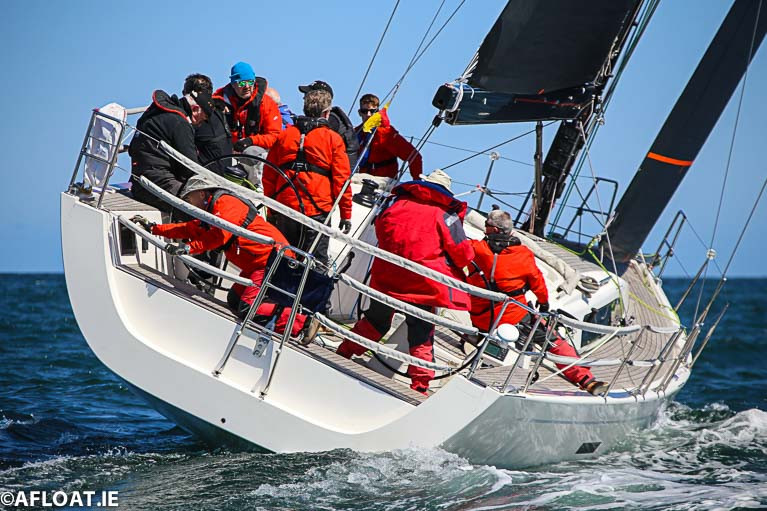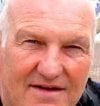Olympic helmsman, professional sailor and coach Mark Mansfield takes a look at how it may be possible to return to keelboat racing while maintaining social distance onboard.
The latest Government five-phase programme appears to allow the reinstatement of boating and sailing from May the 18th, under certain restrictions.
The RNLI and Coastguard will likewise need to lift their advisory notice as well for this to happen.
Irish Sailing is liaising with the yacht clubs in Ireland and the Government to get clarity on specific aspects of this five-phase plan. In the interim, commencing racing appears to be positioned in Phase 3, which would begin on June the 29th but many sailors are asking; how can this happen under the requirement to also socially distance ourselves from others?
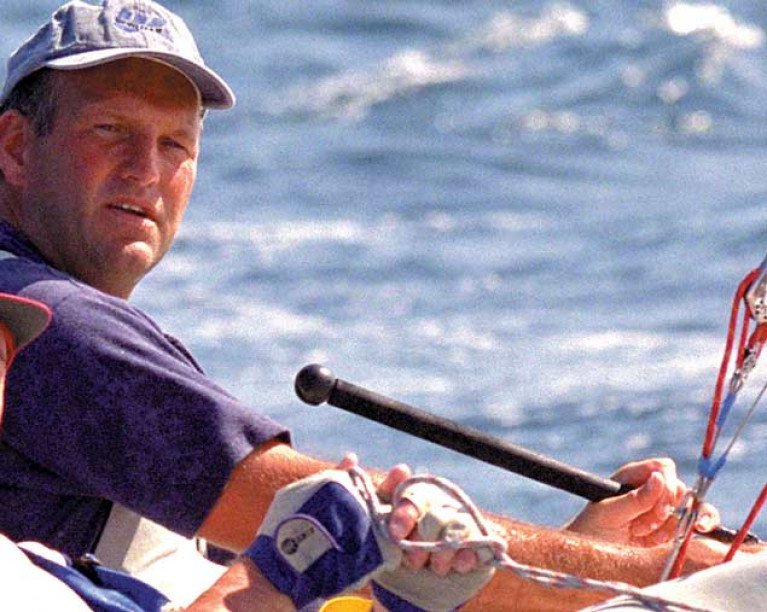 Article author Mark Mansfield sailed the Star keelboat for Ireland at four Olympic Regattas between 1996 and 2004. He is a multi-class Irish keelboat champion
Article author Mark Mansfield sailed the Star keelboat for Ireland at four Olympic Regattas between 1996 and 2004. He is a multi-class Irish keelboat champion
Other sports are also in the same situation with resumption to training planning on commencing in Phase 2 in early June and some matches in Phase 3. Team sports like soccer, Gaelic, hockey, basketball and others have further complications in that they compete directly against opposition at close quarters.
Luckily in sailing, though we are a team sport, our opposition usually is quite a bit away from us. It is therefore in our own hands how, on boats, we can keep our distance when racing. The following are my thoughts on how this can happen successfully, keeping our sport going in these difficult times.
Dinghies that rely on rescue boats when capsized, and two-person dinghies and smaller keelboats will have additional challenges. However, for the purposes of this article, I will concentrate on larger keelboats that have engines to allow them to look after themselves in the event of an emergency.
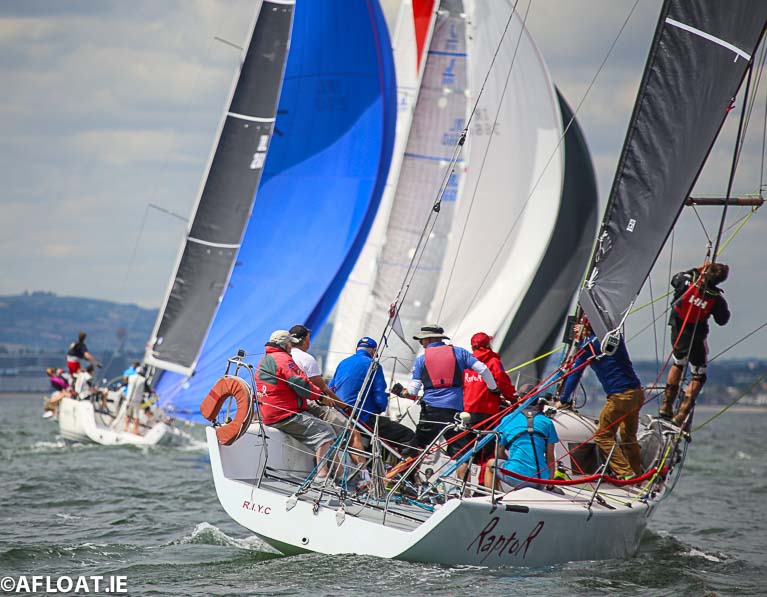 Class One boats approach a leeward mark on Dublin Bay in 2019 Photo: Afloat
Class One boats approach a leeward mark on Dublin Bay in 2019 Photo: Afloat
Fully crewed or shorthanded?
Though there are other options around bubbles, family crew and the like, clearly it will be challenging to sail fully crewed for the first couple of months and still keep the required space between each other. The sight of 8 bodies huddled together on the rail while going upwind on a 35-foot cruiser-racer would not only be regarded as unsafe but irresponsible and would send all the wrong messages.
So, at what crewing levels could racing happen and still keep close to the permitted social distancing levels?
It is possible to specify a max crew level for different sized boats.
Different sized boats have different crewing needs. An SB20 sportsboat, for example, does not need the same crew numbers as a 42-footer. So what crew numbers would be required on different sized boats. Here is my estimate:
- Up to 26 footers 3 max per boat – Only 2 allowed to sit over the side
- Over 26 foot and up to 31 foot – Max of 4 crew – only 2 allowed to sit over the side
- Over 31 foot and up to 36 foot – Max 5 crew – only 2 allowed to sit over the side
- Over 36 foot and up to 41 foot – Max 6 crew – only 3 allowed to sit over the side
- Over 41 foot and up to 46 foot – Max 7 crew and only 4 allowed to sit over the side
And so on in 5-foot sized increases.
An amendment to The Notice of Race (NOR) could be inserted for events to make these reduced numbers a requirement, while we still have these restrictions due to COVID 19.
Is this enough crew to race boats with spinnakers?
In the Fastnet Race in 2019, There were 65 entries in the Two-handed class, ranging from 45 footers, down to 30 footers. Most boats were in the 35-foot size range and used spinnakers. Yes they all would have autopilots, and that effectively gives you an extra pair of hands doing sail changes, but that still would mean that they would have had two less crew than my crew size thoughts above.
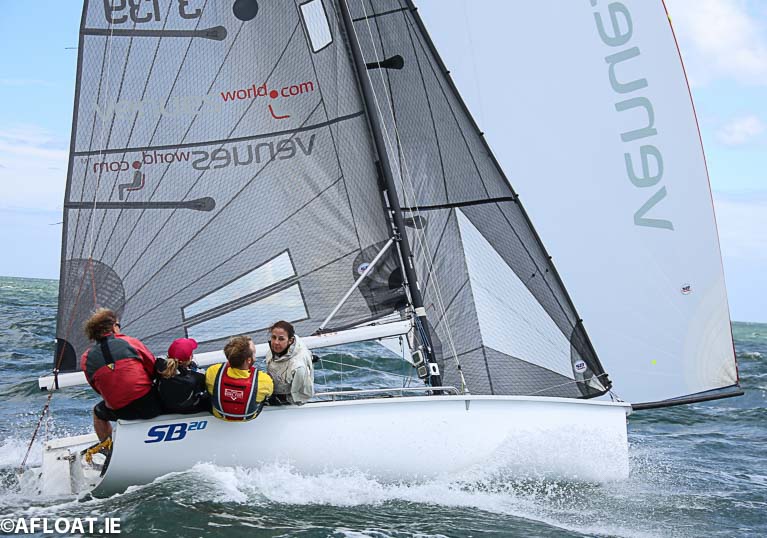 An SB20 racing under spinnaker in strong breeze with a crew of four on Dublin Bay Photo: Afloat
An SB20 racing under spinnaker in strong breeze with a crew of four on Dublin Bay Photo: Afloat
SB20
Certain classes, such as the SB20, would still find it challenging to keep a distance with 3 on board, and having spoken to the class, they could see a possibility, if required, to sail with just 2 crew, particularly in light winds. In stronger winds, they may wish to just sail without spinnakers.
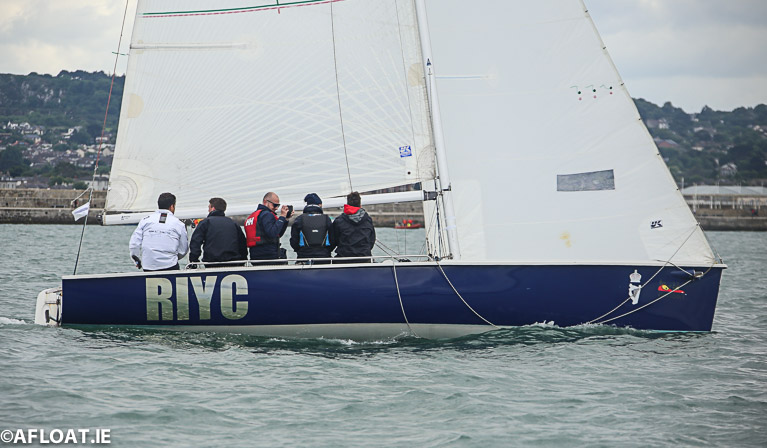 A 1720 keelboat with a crew of five in Dun Laoghaire Harbour Photo: Afloat
A 1720 keelboat with a crew of five in Dun Laoghaire Harbour Photo: Afloat
1720
The 1720 class has also looked at this, and Class Captain Clive O'Shea told Afloat: "If required, the 1720 class is ideally situated to reduce numbers to allow social distancing while racing. Three crew can keep apart, and we still have the option to go with small spinnakers and small jibs, if needed."
So how would this happen on a typical small cruiser, like a J24 or a medium-sized cruiser-racer like a J109?
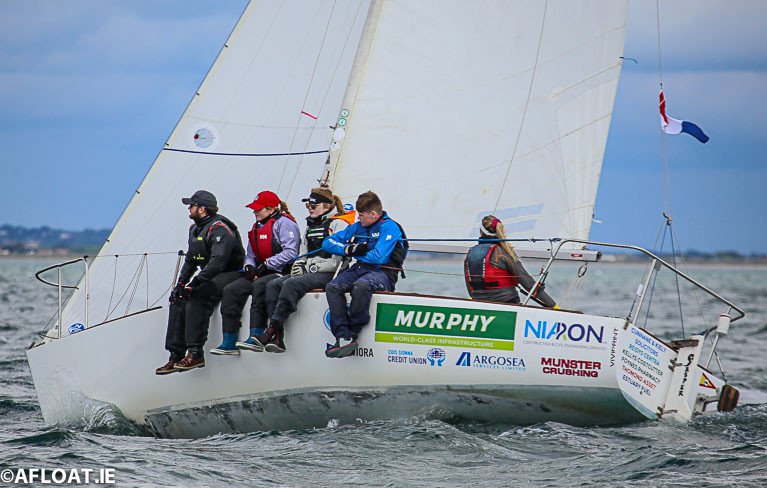 A J24 in racing mode Photo: Afloat
A J24 in racing mode Photo: Afloat
J24
Three crew could handle a J24; One is helming and trimming the main, one in the cockpit, and one on the bow. The Bowman stays forward of the shrouds; the cockpit person stays away from the helm, up by the hatch. It won't be all that easy, but 30-foot boats like Etchells have similar-sized sails and normally sail with 3.
 A fully crewed J109 on Dublin Bay (above) and a two-handed crew on the same model (below)
A fully crewed J109 on Dublin Bay (above) and a two-handed crew on the same model (below)
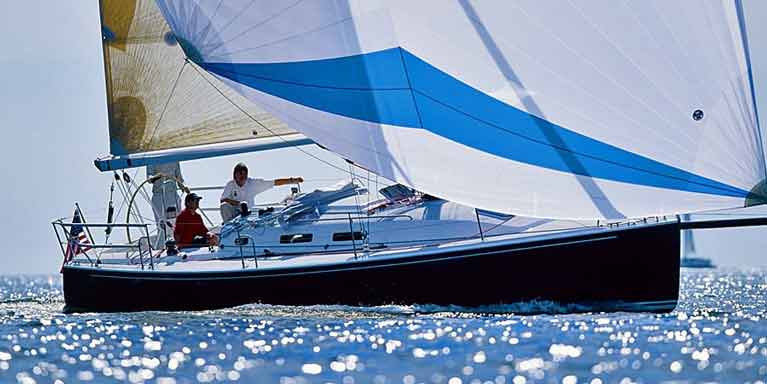
J109
Five on a J109; One on the wheel, staying back a bit. One in the cockpit is trimming the mainsheet but sitting well forward. Helm adjusts the traveller or leaves it in the centre. One sits in the hatch, or on top of the coachroof. The Jib Trimmer sits out, and during tacks, they pull in the new sheet while the Mainsheet Trimmer has let off the old jib sheet. The Bow person sits out forward of the shrouds; jib trimmer sits out to windward, 2 metres back from the Bowman. Downwind more room becomes available as both sides of the boat can accommodate the crew. Andrew Craig, Class Captain of the J109 class in Ireland, says, 'the J109 is well suited to shorthanded racing with the small jib and plenty of space for a reduced number to spread out. The Asymmetrical Spinnaker requires no pole which also makes shorthanded use possible in the right conditions'
White Sails & other options
For those with boats that are harder to sail, or if a crew is not that experienced, there is also the white sails (non-spinnaker) fleet to compete in, until fully crewed racing resumes.
Dublin Bay Sailing Club is the largest yacht racing club in the country with over 250 boats in 20 or so classes. Its Commodore, Johnathon Nicholson has this to add; "Along with the other clubs, DBSC is working with Irish Sailing to create a clear and safe path to get back on the water. We are currently investigating the practicalities of racing short haded with the appropriate physical distancing and when it could be introduced following the guidance provided by the government, Sport Ireland and Irish Sailing".
I appreciate there may be occasions during racing that crew get closer than planned for short periods. This is to be expected, but that will be the situation in virtually all sports that will likely be competing over the next few months. It is incumbent in our sport to come up with a plan to compete as safely as possible. This is just one option, and there will likely be others. Of course, this COVID-19 restriction could be tightened or eased during the next few months, and this proposed plan would then need to be looked at again. Reducing racing crew numbers also decreases the numbers that come back into the clubs allowing easier social distancing ashore.
Ultimately, however, as all sailors know, it is up to each individual skipper and crew to make their own decision about whether to go to sea or not.




























